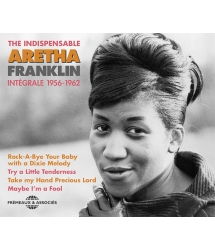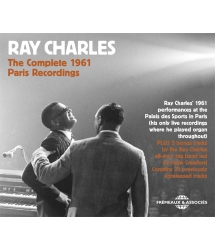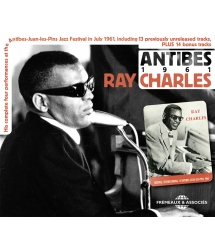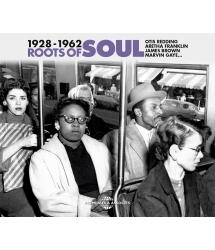- Our Catalog
- Philosophy
- Philosophers of the 20th century and today
- History of Philosophy (PUF)
- Counter-History and Brief Encyclopedia by Michel Onfray
- The philosophical work explained by Luc Ferry
- Ancient thought
- Thinkers of yesterday as seen by the philosophers of today
- Historical philosophical texts interpreted by great actors
- History
- Books (in French)
- Social science
- Historical words
- Audiobooks & Literature
- Our Catalog
- Jazz
- Blues
- Rock - Country - Cajun
- French song
- World music
- Africa
- France
- Québec / Canada
- Hawaï
- West Indies
- Caribbean
- Cuba & Afro-cubain
- Mexico
- South America
- Tango
- Brazil
- Tzigane / Gypsy
- Fado / Portugal
- Flamenco / Spain
- Yiddish / Israel
- China
- Tibet / Nepal
- Asia
- Indian Ocean / Madagascar
- Japan
- Indonesia
- Oceania
- India
- Bangladesh
- USSR / Communist songs
- World music / Miscellaneous
- Classical music
- Composers - Movie Soundtracks
- Sounds of nature
- Our Catalog
- Youth
- Philosophy
- News
- How to order ?
- Receive the catalog
- Manifesto
- Dictionnary











- Our Catalog
- Philosophy
- Philosophers of the 20th century and today
- History of Philosophy (PUF)
- Counter-History and Brief Encyclopedia by Michel Onfray
- The philosophical work explained by Luc Ferry
- Ancient thought
- Thinkers of yesterday as seen by the philosophers of today
- Historical philosophical texts interpreted by great actors
- History
- Books (in French)
- Social science
- Historical words
- Audiobooks & Literature
- Our Catalog
- Jazz
- Blues
- Rock - Country - Cajun
- French song
- World music
- Africa
- France
- Québec / Canada
- Hawaï
- West Indies
- Caribbean
- Cuba & Afro-cubain
- Mexico
- South America
- Tango
- Brazil
- Tzigane / Gypsy
- Fado / Portugal
- Flamenco / Spain
- Yiddish / Israel
- China
- Tibet / Nepal
- Asia
- Indian Ocean / Madagascar
- Japan
- Indonesia
- Oceania
- India
- Bangladesh
- USSR / Communist songs
- World music / Miscellaneous
- Classical music
- Composers - Movie Soundtracks
- Sounds of nature
- Our Catalog
- Youth
- Philosophy
- News
- How to order ?
- Receive the catalog
- Manifesto
- Dictionnary
20-21 OF OCTOBER 1961 / 17-18-20-21 OF MAY 1962
RAY CHARLES
Ref.: FA5466
Label : Frémeaux & Associés
Total duration of the pack : 3 hours 51 minutes
Nbre. CD : 3
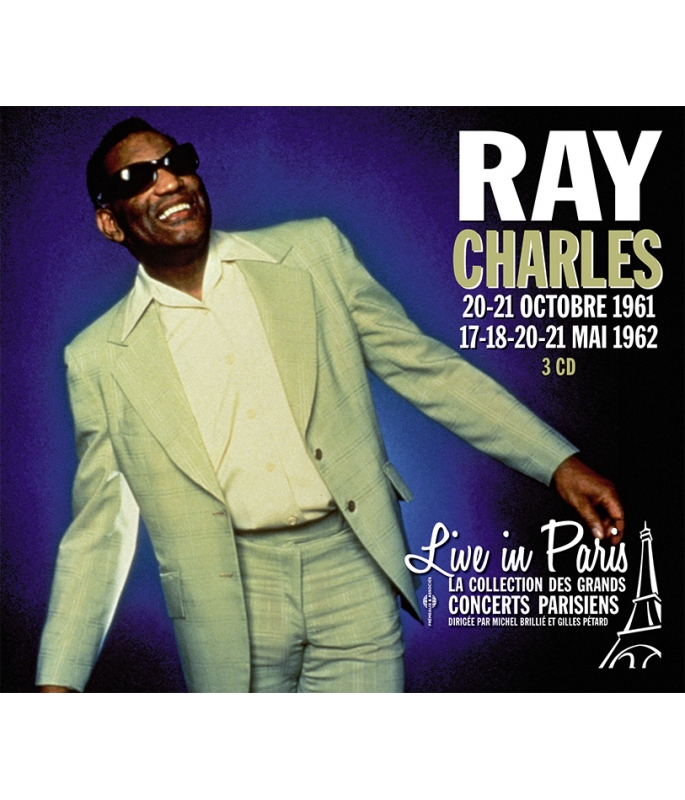
20-21 OF OCTOBER 1961 / 17-18-20-21 OF MAY 1962
This 3CD set combines Ray Charles’ Paris concerts in autumn 1961 and spring 1962, and captures his audiences’ discovery of ‘The Genius’, a genuine phenomenon in Sixties’ French society. This is Ray Charles at the summit of his art, with music at the borders of blues, soul and rhythm & blues. These astounding versions of his greatest hits, including “What I’d Say”, “Georgia on my Mind”, “Hit the Road, Jack” and “Unchain my Heart”, and the exciting ‘live’ atmosphere, make this set indispensable as a fascinating illustration of an artist who, only ten years after his death, remains one of the most brilliant icons of 20th century music.
Patrick FRÉMEAUX
The Live in Paris collection by Michel Brillié allows listeners to hear previously-unreleased recordings (made at concerts and private- or radio-sessions) by the great 20th stars in jazz, rock & roll and song. These “live” takes, and the artists’ rapport with their audiences, gives these performances an additional soul and sensibility in counterpoint to the rigorous demands of studio recordings. Particular care was taken when restoring the sound of these tapes in order to meet CD standards while preserving the original colours of the period.
Patrick FRÉMEAUX & Gilles PÉTARD
CD1
I WONDER • STICKS AND STONES • MY BABY • JUST FOR A THRILL • MARGIE • MOANIN’ • ALEXANDER’S RAGTIME BAND • I BELIEVE TO MY SOUL • MY BONNIE • I’VE GOT NEWS FOR YOU • YES INDEED • HIT THE ROAD JACK • WHAT’D I SAY • LET THE GOOD TIMES ROLL • COME RAIN OR COME SHINE • HALLELUJAH, I LOVE HER SO • I’M GONNA MOVE TO THE OUTSKIRTS OF TOWN • GEORGIA ON MY MIND.
CD2
ALEXANDER’S RAGTIME BAND • I WONDER • I BELIEVE TO MY SOUL • HIT THE ROAD JACK • WHAT’D I SAY • GEORGIA ON MY MIND • MARGIE • COME RAIN OR COME SHINE • HALLELUJAH, I LOVE HER SO • CARELESS LOVE • I GOT A WOMAN • DOODLIN’ WARM UP • DOODLIN’ • ONE MINT JULEP • LET THE GOOD TIMES ROLL • UNTITLED BLUES • ALEXANDER’S RAGTIME BAND.
CD3
THE RIGHT TIME • HIT THE ROAD JACK • I BELIEVE TO MY SOUL • MY BONNIE • UNCHAIN MY HEART • I CAN’T STOP LOVING YOU • BYE BYE LOVE • YES INDEED • WHAT’D I SAY • GEORGIA ON MY MIND • HIDE NOR HAIR • CARELESS LOVE • DANGER ZONE • MARIE • DROWN IN MY OWN TEARS • YES INDEED • RAY’S FRENCH INTRO • ONE MINT JULEP • LET THE GOOD TIMES ROLL • MARGIE • TELL THE TRUTH.
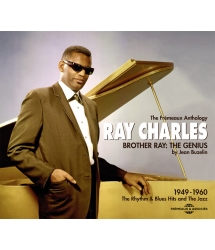
BROTHER RAY : THE GENIUS
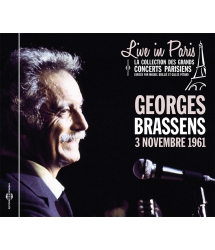
LIVE IN PARIS (3 NOVEMBRE 1961)
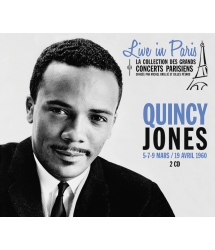
5-7-9 MARS / 19 AVRIL 1960



-
PisteTitleMain artistAutorDurationRegistered in
-
1I WonderRay Charles, John Hunt, Henderson Chambers, Hank Crawford, The Realettes…Cecil Gant00:03:561961
-
2Sticks And StonesRay Charles, John Hunt, Henderson Chambers, Hank Crawford, The Realettes…Ray Charles00:03:131961
-
3My BabyRay Charles, John Hunt, Henderson Chambers, Hank Crawford, The Realettes…Ray Charles00:05:161961
-
4Just For A ThrillRay Charles, John Hunt, Henderson Chambers, Hank Crawford, The Realettes…Ray Charles00:06:411961
-
5MargieRay Charles, John Hunt, Henderson Chambers, Hank Crawford, The Realettes…Cecil Gant00:02:371961
-
6Moanin'Ray Charles, John Hunt, Henderson Chambers, Hank Crawford, The Realettes…Bobby Timmons00:03:281961
-
7Alexander's Ragtime BandRay Charles, John Hunt, Henderson Chambers, Hank Crawford, The Realettes…Irving Berlin00:02:481961
-
8I Believe To My SoulRay Charles, John Hunt, Henderson Chambers, Hank Crawford, The Realettes…Ray Charles00:03:511961
-
9My BonnieRay Charles, John Hunt, Henderson Chambers, Hank Crawford, The Realettes…Sam Theard00:03:451961
-
10I've Got News For YouRay Charles, John Hunt, Henderson Chambers, Hank Crawford, The Realettes…Ray Charles00:04:181961
-
11Yes IndeedRay Charles, John Hunt, Henderson Chambers, Hank Crawford, The Realettes…Ray Charles00:02:461961
-
12Hit The Road JackRay Charles, John Hunt, Henderson Chambers, Hank Crawford, The Realettes…Percy Mayfield00:02:191961
-
13What'd I SayRay Charles, John Hunt, Henderson Chambers, Hank Crawford, The Realettes…Ray Charles00:06:521961
-
14Let The Good Times RollRay Charles, John Hunt, Henderson Chambers, Hank Crawford, The Realettes…Sam Theard00:02:361961
-
15Come Rain Or Come ShineRay Charles, John Hunt, Henderson Chambers, Hank Crawford, The Realettes…Johnny Mercer00:06:561961
-
16Hallelujah I Love Her SoRay Charles, John Hunt, Henderson Chambers, Hank Crawford, The Realettes…Ray Charles00:03:261961
-
17I'M Gonna Move To The Outskits Of TownRay Charles, John Hunt, Henderson Chambers, Hank Crawford, The Realettes…Andy Razaf00:05:161961
-
18Georgia On My MindRay Charles, John Hunt, Henderson Chambers, Hank Crawford, The Realettes…S. Gorrell00:07:331961
-
PisteTitleMain artistAutorDurationRegistered in
-
1Alexander's Ragtime BandRay Charles, John Hunt, Henderson Chambers, Hank Crawford, The Realettes…Irving Berlin00:02:361961
-
2I WonderRay Charles, John Hunt, Henderson Chambers, Hank Crawford, The Realettes…Cecil Gant00:03:561961
-
3I Believe To My SoulRay Charles, John Hunt, Henderson Chambers, Hank Crawford, The Realettes…Ray Charles00:03:481961
-
4Hit The Road JackRay Charles, John Hunt, Henderson Chambers, Hank Crawford, The Realettes…Percy Mayfield00:02:411961
-
5What'd I SayRay Charles, John Hunt, Henderson Chambers, Hank Crawford, The Realettes…Ray Charles00:06:241961
-
6Hallelujah I Love Her SoRay Charles, John Hunt, Henderson Chambers, Hank Crawford, The Realettes…Ray Charles00:03:151962
-
7Georgia On My MindRay Charles, John Hunt, Henderson Chambers, Hank Crawford, The Realettes…S. Gorrell00:07:061962
-
8MargieRay Charles, John Hunt, Henderson Chambers, Hank Crawford, The Realettes…Benny Davis00:02:271962
-
9Come Rain Or Come ShineRay Charles, John Hunt, Henderson Chambers, Hank Crawford, The Realettes…Johnny Mercer00:07:081962
-
10Careless LoveRay Charles, John Hunt, Henderson Chambers, Hank Crawford, The Realettes…Handy W.C.00:05:321962
-
11I Got A WomanRay Charles, John Hunt, Henderson Chambers, Hank Crawford, The Realettes…Ray Charles00:05:351962
-
12Doodlin' Warm UpRay Charles, John Hunt, Henderson Chambers, Hank Crawford, The Realettes…Ray Charles00:01:191962
-
13Doodlin' Warm UpRay Charles, John Hunt, Henderson Chambers, Hank Crawford, The Realettes…H. Silver00:07:491962
-
14One Mint JulepRay Charles, John Hunt, Henderson Chambers, Hank Crawford, The Realettes…R. Toombs00:03:021962
-
15Let The Good Times RollRay Charles, John Hunt, Henderson Chambers, Hank Crawford, The Realettes…Sam Theard00:02:561962
-
16Untitled BluesRay Charles, John Hunt, Henderson Chambers, Hank Crawford, The Realettes…Ray Charles00:08:011962
-
17Alexander's Ragtime BandRay Charles, John Hunt, Henderson Chambers, Hank Crawford, The Realettes…Irving Berlin00:02:361962
-
PisteTitleMain artistAutorDurationRegistered in
-
1The Right TimeRay Charles, John Hunt, Henderson Chambers, Hank Crawford, The Realettes…L. Herman00:03:521962
-
2Hit The Road JackRay Charles, John Hunt, Henderson Chambers, Hank Crawford, The Realettes…Percy Mayfield00:02:221962
-
3I Believe To My SoulRay Charles, John Hunt, Henderson Chambers, Hank Crawford, The Realettes…Ray Charles00:03:411962
-
4My BonnieRay Charles, John Hunt, Henderson Chambers, Hank Crawford, The Realettes…Charles E. Pratt00:03:451962
-
5Unchain My HeartRay Charles, John Hunt, Henderson Chambers, Hank Crawford, The Realettes…Bobby Sharp00:03:221962
-
6I Can't Stop Loving YouRay Charles, John Hunt, Henderson Chambers, Hank Crawford, The Realettes…Don Gibson00:03:261962
-
7Bye Bye LoveRay Charles, John Hunt, Henderson Chambers, Hank Crawford, The Realettes…B & F Bryant00:02:111962
-
8Yes IndeedRay Charles, John Hunt, Henderson Chambers, Hank Crawford, The Realettes…B & F Bryant00:02:561962
-
9What'd I SayRay Charles, John Hunt, Henderson Chambers, Hank Crawford, The Realettes…B & F Bryant00:06:451962
-
10Georgia On My MindRay Charles, John Hunt, Henderson Chambers, Hank Crawford, The Realettes…S. Gorrell00:06:391962
-
11Hide Nor HairRay Charles, John Hunt, Henderson Chambers, Hank Crawford, The Realettes…S. Gorrell00:03:171962
-
12Careless LoveRay Charles, John Hunt, Henderson Chambers, Hank Crawford, The Realettes…W.C. Handy00:05:081962
-
13Danger ZoneRay Charles, John Hunt, Henderson Chambers, Hank Crawford, The Realettes…Percy Mayfield00:03:281962
-
14MarieRay Charles, John Hunt, Henderson Chambers, Hank Crawford, The Realettes…Irving Berlin00:02:181962
-
15Drown In My Own TearsRay Charles, John Hunt, Henderson Chambers, Hank Crawford, The Realettes…Henry Glover00:08:141962
-
16Yes IndeedRay Charles, John Hunt, Henderson Chambers, Hank Crawford, The Realettes…S. Oliver00:03:091962
-
17Ray's French IntroRay Charles, John Hunt, Henderson Chambers, Hank Crawford, The Realettes…Ray Charles00:01:171962
-
18One Mint JulepRay Charles, John Hunt, Henderson Chambers, Hank Crawford, The Realettes…R. Toombs00:03:061962
-
19Let The Good Times RollRay Charles, John Hunt, Henderson Chambers, Hank Crawford, The Realettes…Sam Theard00:02:351962
-
20MargieRay Charles, John Hunt, Henderson Chambers, Hank Crawford, The Realettes…Cecil Gant00:02:381962
-
21Tell The TruthRay Charles, John Hunt, Henderson Chambers, Hank Crawford, The Realettes…L. Pauling00:03:451962
Ray Charles live in Paris FA5466
RAY CHARLES
20-21 OCTobre 1961
17-18-20-21 Mai 1962
Live in Paris
La collection des grands concerts parisiens
Dirigée par Michel Brillié et Gilles Pétard
Ray Charles - Live in Paris
Par Michel Brillié
Dans ce spot TV de 45 secondes de 1997, destiné à promouvoir la France auprès des touristes étrangers, plus de Tour Eiffel, de Louvre, de camembert ou de vin rouge, mais des stars de tous pays, plutôt francophiles. Elles déclarent toutes à la caméra d’Eli Chouraqui : «?I love France?». Parmi elles, Céline Dion, Woody Allen, Claudia Cardinale, Julio Iglesias - et Ray Charles. Pour le chanteur-musicien de Géorgie, c’est un coup de chapeau au pays qui, dès 1961, lui a donné son statut de star internationale, d’abord au festival de jazz d’Antibes, en Juillet, puis au Palais des Sports de Paris, en Octobre. Et c’est vraiment à Paris que Ray Charles et son orchestre ont pu donner la pleine mesure de leur talent. C’est à l’occasion de ces concerts que démarre la «?love affair?» entre le Genius et la France, histoire d’amour qui durera près de quatre décennies.
A leur arrivée quelques jours avant, rien ne pouvait préparer les artistes noirs à l’ampleur de la réaction du public parisien. Initialement, les shows devaient avoir lieu du 20 au 22 Octobre : complets, les organisateurs durent en rajouter deux autres, les 23 et 24 suivants. En 5 jours, 35.000 personnes vont recevoir le «?choc?» de Brother Ray. Un choc que Frank Ténot est peut-être le premier français à encaisser l’année précédente, quand il traverse spécialement l’Atlantique en Novembre 1960 pour aller entendre le chanteur- phénomène à Washington : «?Je fus ébloui. Par le show, l’environnement, l’odeur des cacahuètes grillées grignotées par des voisines aux yeux de biche, la musique aussi, bien sûr. Le Genius, entouré d’un petit groupe, balançait comme un fou. Georgia on My Mind, Yes Indeed, What’d I Say.?» («?Celui qui aimait le jazz?», Editions du Layeur, 2009). Pour les yeux et les oreilles du doux Frank, c’est le rêve parfait du jazz fan.
Un an plus tard, l’ambiance dans la capitale tourne plutôt au cauchemar. Les évènements liés au conflit en Algérie donnent aux circonstances précédant cette série de spectacles un tour particulièrement dramatique. Trois jours avant le premier concert du vendredi 20 Octobre, le 17 donc, a lieu dans la capitale une manifestation de plusieurs dizaines de milliers d’Algériens pour protester contre l’instauration d’un couvre feu. La répression policière est terrible, faisant des dizaines de victimes. De 17?h à minuit, un convoi ininterrompu de cars de police débarque entre 6.000 et 7.000 manifestants, précisément au Palais des Sports, le transformant en un gigantesque camp de rétention. Jusqu’au jour même du premier concert, des détenus restent confinés dans les lieux.
Ray Charles n’a pas oublié cet épisode tragique, et il en révèle un élément troublant dans «?Brother Ray?», son autobiographie : «?Je suis allé à Paris avant d’avoir mis les pieds à Londres et le premier voyage fut étrange. La guerre d’Algérie était en pleine activité?; les bombes explosaient dans toute la ville. Mais les Algériens envoyèrent un mot à mon promoteur disant qu’il n’y aurait aucune explosion sur mon trajet de l’hôtel à la salle de concert. «?Dites à Brother Ray de ne pas s’inquiéter, dirent-ils. Et je ne me suis pas tracassé.?» («?Le Blues dans la peau?», Ray Charles et David Ritz, Traduction Anne Marie Garnier, Belfond, 2005).
Cette série de concerts établit définitivement le statut de Ray Charles en France, celui d’une vedette véritablement populaire, bien au-delà des amateurs du début (Ray Charles avait déjà été célébré par un Grand Prix de l’Académie du Disque en 1958). Et l’autre grande star de la variété du moment, Johnny Hallyday, avoue en 1962 au magazine Cinémonde qu’il a parcouru 400 kilomètres après l’un de ses spectacles pour pouvoir assister au dernier show du Genius au Palais des Sports.
Quelques mois plus tard, en Mai 1962, c’est le même Johnny qui est là, au milieu des fans, pour accueillir Ray Charles à sa descente d’avion à l’aéroport d’Orly et lui serrer la main. «?Une poignée de main de Ray Charles a quelque chose de particulier, confie-t-il toujours à Cinémonde. Pour éviter de tâtonner, il projette son avant bras le premier, et c’est vous qui allez chercher sa main. Et comme pour s’excuser, Ray Charles sourit. Un sourire large, énorme, mais silencieux, qui veut faire oublier les énormes verres noirs.?»
Du 17 au 22 Mai, Ray Charles revient donc à Paris en cette année 62. Chapeauté depuis peu par le grand Norman Granz, le chanteur se produit à guichets fermés dans la salle du boulevard des Capucines. Au mois d’Avril, le chanteur a publié un album qui marque un tournant significatif dans sa carrière, «?Modern Sounds in Country and Western Music?». Pour élargir définitivement son public et séduire l’audience des américains blancs, il a révisité à la soul sauce des classiques de la musique country, tel «??I Can’t Stop Lovin’ You’ de Don Gibson, ou «?Hey, Good Lookin’» de Hank Williams. Ce tournant se retrouve dans le programme qu’il présente dans la salle de Bruno Coquatrix.
L’Olympia constitue sans contexte un bien meilleur cadre pour le Genius : d’abord un éclairage et une sonorisation de qualité, mais surtout un lieu plus intime pour la communion avec son public, favorisée par l’extraordinaire magnétisme du chanteur en live. Le journaliste Raymond Mouly est là tous les soirs pour Jazz Magazine : «?La formidable ovation qui le salue ressemble à une grande respiration qu’on lâche parce qu’on l’a trop longtemps retenue …/… Au piano, plus souriant que jamais, Ray dirige du buste en des oscillations qui gouvernent toute la formation avec une précision incroyable.?» (Jazz Magazine, Juillet 1962). La communion/tension augmente avec l’arrivée des quatre Raelettes, charmeuses et souriantes. Elles sont vêtues de satin vert voilé de dentelle noire un soir, de shantung à fleurs bleues le suivant. Vibrant aux «?sombres inflexions de cette voix qui caresse, qui déchire, qui blesse et panse en même temps, la voix de cet être qui apparait fragile, désarmé et toujours tragique?» 1, la salle de velours rouge du boulevard des Capucines se transforme ainsi en une congrégation baptiste du dimanche, quelque part en dessous de la Mason-Dixon Line, au Sud des USA, pour un dialogue d’une intimité extrême, que ce soit dans «?Drown in My Owns Tears?» ou le final de «?What’d I Say?».
Jean Michel Boris, qui a veillé jalousement sur l’Olympia pendant plusieurs décennies, l’avoue à L’Humanité Dimanche, en juin 2004, quelques jours après la mort de Ray Charles : «?Le Ray Charles que j’ai connu au début, avec le grand orchestre, avec les Raelettes, ses choristes, et les premiers musiciens qui l’accompagnaient, c’était formidable. Le grand orchestre de Ray Charles était vraiment un orchestre de jazz extraordinaire. C’était une révolution à ce moment-là. …/… La dernière fois qu’il s’est produit à l’Olympia, il devait venir avec son grand orchestre quand, à 19 heures, on apprend que ses musiciens sont bloqués et ne pourront l’accompagner. Ray Charles a fait son spectacle malgré tout, avec, pour seuls musiciens, un trio. Il s’est déroulé de la même manière que s’il avait été entouré de son grand orchestre : la magie résidait dans les chansons et dans sa voix.?»
En ce printemps 1962, les milliers de spectateurs enthousiastes qui assistent à cette série de shows reçoivent ainsi la révélation du Genius, dans un degré de communion ultime que Raymond Mouly traduit à sa manière en mettant dans la bouche de Brother Ray ces paroles: «?Je chante, et vous oubliez que vous avez mal aux dents, vous oubliez qui vous êtes, d’où vous venez, et ce que vous aurez à faire, une fois que le rideau sera tombé.»
Dédié à Claude Boquet, Bill Dubois, Jean Claude, Philippe Moch et toute la bande.
Michel BRILLIÉ
© FRÉMEAUX & ASSOCIÉS 2014
1 Frank Ténot, Jazz Magazine, Juillet 1963
Ray Charles - Live in Paris
By Michel Brillié
In 1997, the French Ministry of Tourism produced a forty-five second television commercial, to promote France among foreign tourists. But this time, there was no Eiffel Tower, no Louvre Museum, no camembert cheese nor red wine, but several personalities from all over the world. Facing the camera of director Eli Chouraqui, they all stated unequivocally: “I love France!” They were celebrities such as Céline Dion, Woody Allen, Claudia Cardinale, Julio Iglesias - and Ray Charles.
From the Georgia-born musician and singer, it was indeed a tip of the hat to the country that, ever since 1961, had established him as a true international star. It happened first in July of that year at the Jazz Festival in Antibes, on the Côte d’Azur, then in Paris, later in October, for the series of concerts at The Palais des Sports arena. It is in fact at the Paris venues that Ray Charles and his orchestra gave the full measure of their talent. These shows marked the beginning of the love affair between the Genius and France, a love story that was to last nearly forty years. When the black musicians deplaned a few days earlier at Orly Airport, they were far from realizing the full range of the French audience’s reaction that was to come. Initially, the shows were scheduled from October 20 to 22. They were soon sold out, and the promoters had to add two more, on the 23rd and 24th. During those five days, thirty five thousand persons received Brother Ray’s “shock”. The first Frenchman to get that electrifying treatment is probably jazz fan Frank Ténot, when in November 1960 he flies across the Atlantic to Washington,DC to listen to the phenomenal singer:
“I was stunned. By the show, the surroundings, the scent of grilled peanuts nibbled on by my almond-eyed female neighbors, and by the music, of course. The Genius was backed by a small band, and did he swing! Georgia On My Mind, Yes Indeed, What’d I Say.” (“Celui qui aimait le jazz”, Editions du Layeur, 2009).For the eyes and ears of the soft – spoken Frank, it is the ultimate dream of a true jazz fan.
A year later, however, the atmosphere in the French capital is more like a nightmare than anything else. The Algerian war in its final stage gives a dramatic tone to the events preceding these series of concerts. On October 17 three days before Ray Charles is to perform, thousands of Algerian-born immigrants staged a demonstration to protest the imposition of a curfew. The French police violently repressed the march, resulting in dozens of victims. From 5:00pm to midnight, an uninterrupted convoy of police vans took from 6.000 to 7.000 demonstrators to the Palais des Sports Arena, turning it into a huge detention camp. This took place up to October 20; detainees were still being held in the arena hours before the first scheduled concert.
Ray Charles remembers vividly this tragic episode, and reveals a troubling element in his autobiography, “Brother Ray”: “The Algerian War was in full blast; bombs were exploding all over town. But the Algerians sent a note to my promoter saying there’d be no bombing on my route from the hotel to the concert hall. “Tell Brother Ray not to worry, they said. And I didn’t.” (Brother Ray, Ray Charles & David Ritz, Da Capo Press, 1992).
These concerts give Ray Charles the definite status of a true popular artist in France, much wider than the acknowledgment of the early aficionados (in 1958 Ray had already received a Grand Prix from the French Académie du Disque). And the other big name in French pop music of the time, Johnny Hallyday, confides to Cinémonde Magazine early in 1962 that he drove 400 km in the night to be able to attend one of the Palais des Sports show.
Several months later, in May 1962, here’s Johnny once more, among Ray’s fans, to greet him and shake his hand, as he steps out of the plane at Orly Airport. “A shake from Ray Charles’s hand is special, he tells the magazine. In order not to grope, he is the first to put his arm forward, you are the one shaking his hand. And, as if he wanted to apologize, he smiles. A wide, huge, but silent smile, to make people forget about his big black glasses”.
From May 17 to 22, 1962, Ray is back in Paris. He is now promoted by Norman Granz, and he performs to sold-out crowds at the Olympia, a concert hall located on Boulevard des Capucines, a step away from the Paris Opera. A month before, the singer had issued an album that marked a significant switch in his career, «?Modern Sounds in Country and Western Music?». To widen permanently his audience and become acceptable to the American white public, he has revisited in a soul way country music classics such as “I Can’t Stop Lovin’ You” by Don Gibson, or “Hey, Good Lookin’” by Hank Williams. This new turn is present in the list of songs he performs in the French hall run by Bruno Coquatrix.
The Olympia is undoubtedly a much better setting for the Genius than the Palais des Sports. First of all, the lighting is much better and so is the sound system; but most of all the space is more intimate, and more conducive to a deep communion with the audience, triggered by the extraordinary magnetism of the singer’s live performance. Jazz writer Raymond Mouly attends each and every show for Jazz Magazine: The enormous ovation that greets him is similar to the big breath that you give out after holding it too long…/… At the piano, Ray is more than ever all smiles, and he sways to direct his orchestra with a remarkable precision.” (Jazz Magazine, July 1962). The communion and tension grow with the arrival on stage of the four charming and smiling Raelettes. They are dressed one night in dark green satin veiled with black laces, in flowery blue shantung the next. With the vibrations of “the dark inflexion of this voice that simultaneously strokes, tears, hurts and heals at the same time, the voice of this fragile, unarmed and forever tragic man” 1, the red-velvet Parisian concert hall slowly becomes a Sunday Baptist congregation, somewhere below the Mason-Dixon Line, way down south, for an extremely intimate conversation, as in “Drown in My Owns Tears” or the finale, “What’d I Say”.
Former Olympia Director Jean Michel Boris confesses in June 2004, a few days after Ray Charles’s death, to Humanité Dimanche Magazine: “When I first saw Ray Charles, with the big band, with the Raelettes, and the musicians that backed him then, it was formidable. Ray Charles’s big band was an extraordinary orchestra. It was like a revolution at that time …/… The last time he appeared at the Olympia, he was to perform with his full orchestra. Then at 7:00pm, I am told that the band is stranded somewhere and will not be able to make it. Well Ray Charles went on stage anyway, with just a backing trio. He performed as if the full band was there. The magic was in his songs and his voice.”
In the spring of 1962, the thousands of enthusiastic spectators attending the shows fully get the revelation of the Genius, in a degree of communion that Raymond Mouly expresses by putting the following words in Brother Ray’s mouth: “I sing, and when I do, you forget your toothache, you forget who you are, where you come from, and what you’ll have to do after the curtain falls.”
Dedicated to Claude Boquet, Bill Dubois, Jean Claude, Philippe Moch and the gang
Michel BRILLIÉ
© FRÉMEAUX & ASSOCIÉS 2014
1 Frank Ténot, Jazz Magazine, Juillet 1963
CD 1
1. I Wonder (Pvt. Cecil Gant / Roosevelt Sykes) 3’56
2. Sticks and Stones (Ray Charles - Henry Glover / Titus Turner) 3’13
3. My Baby (Ray Charles) 5’16
4. Just For a Thrill (Ray Charles) 6’41
5. Margie (Pvt. Cecil Gant / Roosevelt Sykes) 2’37
6. Moanin’ (Bobby Timmons) 3’28
7. Alexander’s Ragtime Band (Irving Berlin) 2’48
8. I Believe to My Soul (Ray Charles) 3’51
9. My Bonnie (Sam Theard / Fleecie Moore) 3’45
10. I’ve Got News for You (Ray Charles) 4’18
11. Yes Indeed (Ray Charles) 2’46
12. Hit the Road Jack (Percy Mayfield) 2’19
13. What’d I Say (Ray Charles) 6’52
14. Let the Good Times Roll (Sam Theard / Fleecie Moore) 2’36
15. Come Rain or Come Shine (Johnny Mercer / Harold Arlen) 6’56
16. Hallelujah, I Love Her So (Ray Charles) 3’26
17. I’m Gonna Move to the Outskirts of Town (Andy Razaf / Roy Jacobs - William Weldon) 5’16
18. Georgia On My Mind (Stuart Gorrell / Hoagy Carmichael) 7’33
Recorded by: RTF Technical Staff
Recording dates:
Tracks 1 to 5: October 21, 1961
Tracks 6 to 13: October 22, 1961 (afternoon show)
Tracks 14 to 18: October 22, 1961 (evening show)
Recording place:
Palais des Sports, Paris France
Produced by: Henri Goldgran
CD 2
1. Alexander’s Ragtime Band (Irving Berlin) 2’36
2. I Wonder (Pvt. Cecil Gant / Roosevelt Sykes) 3’56
3. I Believe to My Soul (Ray Charles) 3’48
4. Hit the Road Jack (Percy Mayfield) 2:41
5. What’d I Say (Ray Charles) 6’24
6. Georgia On My Mind (Stuart Gorrell / Hoagy Carmichael) 7’06
7. Margie (Benny Davis - Con Conrad / Russell Robinson) 2’27
8. Come Rain or Come Shine (Johnny Mercer / Harold Arlen) 7’08
9. Hallelujah, I Love Her So (Ray Charles) 3’15
10. Careless Love (W.C. Handy / Martha Koenig / Spencer Williams) 5’32
11. I Got a Woman (Ray Charles) 5’35
12. Doodlin’ Warm Up (Ray Charles) 1’19
13. Doodlin’ (Horace Silver) 7’49
14. One Mint Julep (Rudy Toombs) 3’02
15. Let the Good Times Roll (Sam Theard / Fleecie Moore) 2’56
16. Untitled Blues (Ray Charles) 8’01
17. Alexander’s Ragtime Band (Irving Berlin) 2’36
Recorded by:
RTF Technical Staff (Tracks 1 to 5)
Europe N°1 Technical Staff (Tracks 6 to 17)
Recording dates:
Tracks 1 to 5: October 22, 1961 (evening show)
Tracks 6 to 11: May 17, 1962
Tracks 12 to 17: May 18, 1962
Recording places:
Palais des Sports, Paris France ( Tracks 1 to 5)
Olympia Theater, Paris, France (Tracks 6 to 17)
Produced by: Henri Goldgran (Tracks 1 to 5)
Norman Granz, Frank Ténot & Daniel Filipacchi (Tracks 6 to 17)
CD 3
1. The Right Time (Lou Herman) 3’52
2. Hit the Road Jack (Percy Mayfield) 2’22
3. I Believe to My Soul (Ray Charles) 3’41
4. My Bonnie (Charles E. Pratt) 3’45
5. Unchain My Heart (Bobby Sharp) 3’22
6. I Can’t Stop Loving You (Don Gibson) 3’26
7. Bye Bye Love (Felice Bryant / Boudleaux Bryant) 2’11
8. Yes Indeed (Sy Oliver) 2’56
9. What’d I Say (Ray Charles) 6’45
10. Georgia On My Mind (Stuart Gorrell / Hoagy Carmichael) 6’39
11. Hide Nor Hair (Percy Mayfield) 3’17
12. Careless Love (W.C. Handy / Martha Koenig / Spencer Williams) 5’08
13. Danger Zone (Percy Mayfield) 3’28
14. Marie (Irving Berlin) 2’18
15. Drown in My Own Tears (Henry Glover) 8’14
16. Yes Indeed (Sy Oliver) 3’09
17. Ray’s French Intro (Ray Charles) 1’17
18. One Mint Julep (Rudy Toombs) 3’06
19. Let the Good Times Roll (Sam Theard / Fleecie Moore) 2’35
20. Margie (Pvt. Cecil Gant / Roosevelt Sykes) 2’38
21. Tell the Truth (Lowman Pauling) 3’45
Recording dates:
Tracks 1 to 9: May 18, 1962
Tracks 10 to 16: May 20, 1962
Tracks 17 to 21: May 21, 1962
Recording place:
Olympia Theater, Paris, France
Produced by: Norman Granz, Frank Ténot & Daniel Filipacchi
Personnel
Ray Charles vocal, piano, organ
Trumpets
John Hunt
Marcus Belgrave
Phil Guilbeau
Wallace Davenport
Trombones
Henderson Chambers
James Lee Harbert
Keg Johnson
Leon Comegys
Saxophones
Hank Crawford alto sax
Rudy Powell alto sax
David Newman ts, as, fl
Don Wilkerson ts
Leroy Cooper bs
Rhythm
Bruno Carr drums
Sonny Forriest guitar
Edgar Willis bass
Backing vocals The Raelettes
Gwen Berry
Margie Hendricks
Pat Lyles
Darlene McCrea
La collection Live in Paris :
Collection créée par Gilles Pétard pour Body & Soul et licenciée à Frémeaux & Associés.
Direction artistique et discographie :
Gilles Pétard et Michel Brillié.
Fabrication et distribution :
Frémeaux & Associés.
Regroupant les concerts parisiens de l’automne 1961 et du printemps 1962, ce coffret 3 CD témoigne de la rencontre du Genius avec le public français (un véritable phénomène de société à l’époque). Un Ray Charles au sommet de son art, toujours aux frontières de la soul, du rhythm & blues, du blues, qui délivre des versions étonnantes de ses plus grands tubes, «?What I’d Say?», «?Georgia on my Mind?», «?Hit the Road Jack?», «?Unchained my Heart?». Un coffret indispensable qui, par la fraîcheur du «?live?», donne le plus fabuleux éclairage sur l’une des plus étincelantes icônes musicales du XXe siècle, disparue il y a tout juste 10 ans.
Patrick FRÉMEAUX
This 3CD set combines Ray Charles’ Paris concerts in autumn 1961 and spring 1962, and captures his audiences’ discovery of ‘The Genius’, a genuine phenomenon in Sixties’ French society. This is Ray Charles at the summit of his art, with music at the borders of blues, soul and rhythm & blues. These astounding versions of his greatest hits, including “What I’d Say”, “Georgia on my Mind”, “Hit the Road, Jack” and “Unchain my Heart”, and the exciting ‘live’ atmosphere, make this set indispensable as a fascinating illustration of an artist who, only ten years after his death, remains one of the most brilliant icons of 20th century music.
Patrick FRÉMEAUX
La collection « Live in Paris », dirigée par Michel Brillié, permet de retrouver des enregistrements inédits (concerts, sessions privées ou radiophoniques) de grandes vedettes du jazz, du rock & roll et de la chanson du XXe siècle. Ces prises de son live et la relation avec le public apportent un supplément d’âme et une sensibilité en contrepoint de la rigueur appliquée lors des enregistrements studios. Une importance singulière a été apportée à la restauration sonore des bandes pour convenir aux standards CD tout en conservant la couleur d’époque.
Patrick FRÉMEAUX & Gilles PÉTARD
The Live in Paris collection by Michel Brillié allows listeners to hear previously-unreleased recordings (made at concerts and private- or radio-sessions) by the great 20th stars in jazz, rock & roll and song. These “live” takes, and the artists’ rapport with their audiences, gives these performances an additional soul and sensibility in counterpoint to the rigorous demands of studio recordings. Particular care was taken when restoring the sound of these tapes in order to meet CD standards while preserving the original colours of the period.
Patrick FRÉMEAUX & Gilles PÉTARD
CD Ray Charles Live in Paris 20-21 octobre 1961/17-18-20-21 mai 1962, Ray Charles © Frémeaux & Associés 2014.
